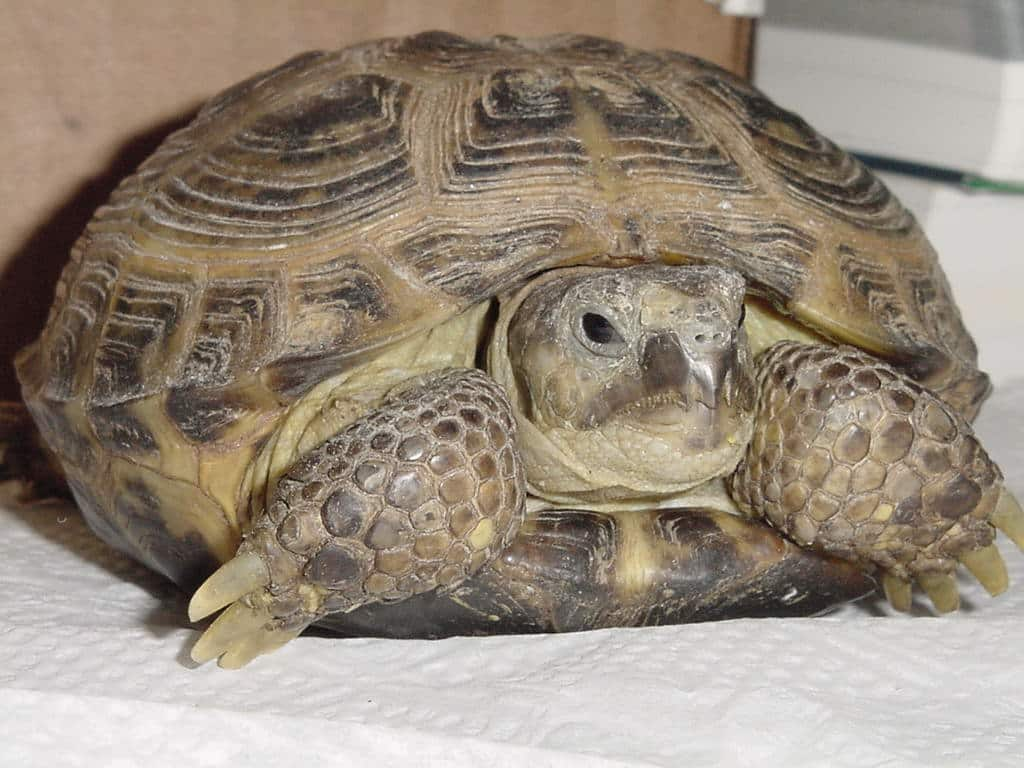A pretty female Blunt-nosed Leopard Lizard.
Finding the creature, the Blunt-nosed leopard lizard, Gambelia sila, a Federally Endangered species.took several hours of concerted searching by Tom Tyning and me. We knew sila to be a resident of California’s Carizzo Plains, and it was in that area that we centered our efforts. We had been told “you’ll see ’em sunning on the rocks.” But, I had failed to find out exactly where these rocks were. So we looked, we drove, we hiked, and we looked some more. We finally did find a few rocks along a dried streambed, but only side-blotched lizards and California ground squirrels seemed resident there. We traipsed through lush mountain meadows, yellowed with the blooms of California poppies, and low, drouth-browned grasslands. We found gopher snakes galore. We found a southern Pacific rattler, and eventually, after a full day of searching, we found a small population of the leopard lizards. On rocks? Heck no! There wasn’t a rock in sight!
As we were driving slowly down a rutted sand road, Tom quietly said “I just saw a lizard.”
My query was “What kind?”
“I don’t know, but it was bigger than an Uta (side-blotched lizard).”
“Where did you see it?”
“In the middle of the road. I think it went down a hole.”
So I stopped, and backed up.
Yep, there was a hole there. And I guess my right tires had gone directly over it.
So I parked the car, and we got out, and sat on the ground some dozen feet away from the hole.
After several minutes of sitting a tiny nose poked above the rim of the hole. A few minutes more and an eye emerged. It was a blunt-nose, no question about that. I congratulated Tom on seeing the creature. Now, could we get photos?
The short answer was “yes, we could.” And we did.
After another 15 minutes the lizard decided we were nothing more than misplaced dirt-clods and emerged from his hole.We both got pix. Mission accomplished but not yet over. Just as dark clouds began covering the face of the late afternoon sun, we happened across a prettily colored female leopard lying quietly on the side of the trail. We both got photos there and before we left the area we had succeeded in getting pix of several more.
An iffy day had become a banner day. Thanks, Tom.
Continue reading “Blunt-nosed Leopard Lizards” …read more
Read more here: King Snake



















-med.jpg?w=250)


